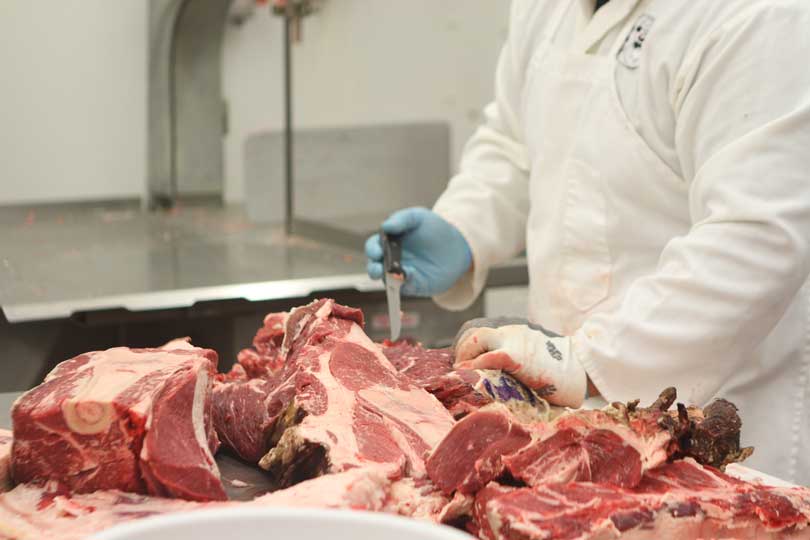By Jessica Domel
Multimedia Reporter
A recent report from the U.S. Department of Agriculture (USDA) focusing on the amount of beef, pork, poultry and lamb in cold storage sparked concerns earlier this month of a looming stockpile that could force prices even lower.
While supplies for some meat sectors were higher, if you dig into the information, it’s not concerning, according to Dr. David Anderson, Texas A&M University professor and AgriLife Extension Service economist.
Beef
“If we look at the amount of beef, it’s practically right on the five-year average for June as to how much beef supplies we have in cold storage,” Anderson said in an interview with the Texas Farm Bureau (TFB) Radio Network. “We actually had less pork in cold storage. I think the real story for this is the amount of chicken that is in storage, because that’s where the numbers are really growing.”
In June, the amount of beef in cold storage was down three percent from last month, but up eight percent from June of 2017.
Domestic and international demand for beef remains high, so it tends to move through supply chain quickly, Anderson said.
“Our exports have been booming, and that has supported ranchers’ and farmers’ prices,” he said.
Poultry
In June, chicken stocks in cold storage were up two percent from May and up 10 percent from the same time last year.
“That reflects, I think, some trade problems on the chicken side where they’ve just had some slowing exports, and yet, we’re increasing production,” Anderson said.
The amount of turkey in cold storage rose five percent in June from the last month, but fell one percent from June 2017.
“We’ve got chicken in cold storage that totaled in June around 900 million pounds. That was up from 800 million pounds the year before and about 700 million pounds as a five-year average,” Anderson said. “Since we’ve already produced it, if our sales slow down, it’s got to stay in storage. I think it’s indicative of some lower prices, large production and slowing exports.”
Pork
Several times over the past few years, reports of lower pork bellies have prompted speculations of a looming “baconpocalypse” or bacon apocalypse.
While pork bellies in cold storage were down 16 percent from last month, Anderson said there’s no need for immediate concern.
There are 130 percent more pork bellies in storage than there were at this time last year.
“We’re producing a record amount of pork this year, and more pigs means more pork and more pork bellies. In fact, in that latest cold storage report, there were 51 million pounds of pork bellies in cold storage compared to about 22 million last year at the same time,” Anderson said. “Our supplies sort of caught up with that big surge in demand, and now we’ve got a little more supplies on hand, which helps kind of cushion those spikes in prices.”
U.S. pork faces a 20 percent tariff in Mexico and a 62 percent tariff in China, which are two of the sector’s largest export markets. The additional duties can make U.S. pork less competitive.
“We’ll sell less pork there, because our price is now higher,” Anderson said. “We are either going to store more of it, or we’re going to sell more to other markets but at a lower price.”
At the lower price, more markets may be interested in U.S. pork, but that also means a lower price for U.S. growers and the supply chain.”
Expectations are more meat will end up in cold storage as retaliatory tariffs from other countries weigh on almost everyone along the supply chain.
“If we look at total meat supplies that are in this ‘stock pile,’ we’re talking a week or a week-and-a-half of our normal meat production or consumption in stocks, and that’s really not a level that’s worth worrying too much about,” Anderson said.
Lamb
Lamb supplies were up more than 100 percent in June compared to last month and last year.
“

